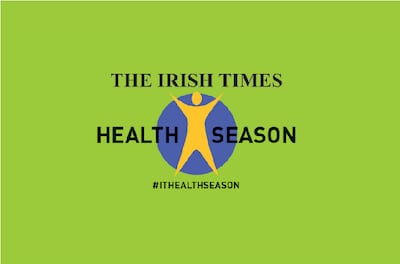
Among the many reasons a particular sport can appeal to children, being able to continue participating in it past pension age is certainly not one of them. It’s the immediate influences of parents, schools, friends and sporting heroes of the moment that matter.
But the idea of "sport for life" is attracting increasing attention because of the numerous physical, mental and social benefits it brings. It's why Sports Ireland monitors who is dropping out of what sports when – and what they might, or might not, take up instead.
Parents, who without exception want to raise their children to enjoy long and healthy lives, might do well to take “age proofing” into account when considering sporting opportunities for their offspring. An added bonus of “cradle to the grave” sports is that two or more generations can play them together.
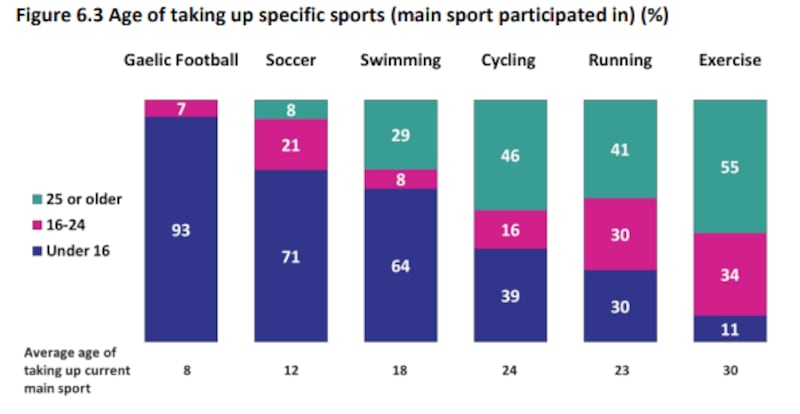
“Those who participate in team sports only in their youth are less likely to participate in sport throughout their life course than those who participate in individual sports only,” says Sports Ireland in response to queries from The Irish Times. “This is especially true for girls. However, those who participate in both team sports and individual sports are most likely of all to participate in sport for life.”
It acknowledges that “sport for life” is a complex concept with many contributing factors. Developing physical literacy at an early age, and maintaining that into adulthood, is a key contribution to lifelong sports participation. Physical literacy can be defined as the motivation, confidence, physical competence, knowledge and understanding to engage with and maintain sport participation and physical activity.
By the end of primary school, almost 90 per cent of children in Ireland play sport at least once a week, with almost no difference between boys and girls. Approximately one in 10 children drop out of sport when they move to secondary and participation rates continue to fall over the subsequent years, with a marked dip among Junior Cert and Leaving Cert pupils, despite evidence of a positive association between playing sport and exam performance.
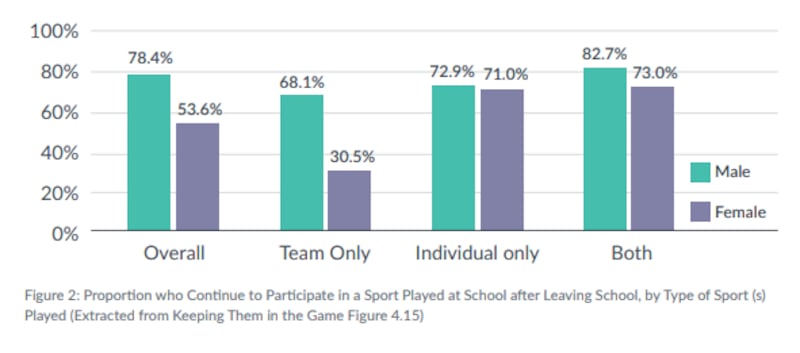
The dropout at second level is greater for extracurricular school sport than community club sport. It is also higher amongst girls, children from socioeconomic disadvantage and children with a disability, according to Sport Ireland, which also notes that the dip in exam years appears to have a lasting effect into later life.
“The key to lifelong involvement,” it adds, “is in providing kids with the opportunity to play a range of both team and individual sports in a culture which is child centred.”
Although we could presume that playing and enjoying a particular sport from an early age would make it easier to continue, or resume, not all are conducive to maturing bodies and minds. In fact more than half the sporting activities of adults over 40 are taken up after the age of 18.
Lifetime participation is a lot less likely in contact or high-impact sports because there is a higher risk of traumatic and overuse injuries. That’s not to say they can’t be played to retirement age and beyond.
Hockey Ireland, for example, which is enjoying a boost at the junior end from the success of the women’s international team in particular, has a range of men’s and women’s master squads. Teams, up to over 70s for men and over 55s for women, are fielded for international tournaments.
The National Sports Policy recognises three key sports which are particularly successful in supporting lifelong participation: swimming, cycling and running.
These are the top three, in a look at seven of the best sports to span a lifetime:
Swimming
Given the health and safety benefits of swimming across the life course, there is no doubt it should be near the top of the list of sports everyone should do, says Sport Ireland. Yet the 2018 Children’s Sport Participation and Physical Activity study found that almost one in four primary and post-primary pupils reported being non-swimmers or beginners. The study is to be repeated this year, to look at the impact of pool closures during the pandemic.
Swim Ireland is concerned that an estimated half a million children have missed out on swimming lessons. Faced with a lack of pool capacity and insufficient staff to cope with the backlog, the organisation is planning several initiatives to address the issue, according to its director of operations, Mary McMorrow.
One is a portable pool made from a shipping container, measuring 12m by 3.5m, a depth of 1.2m, with fully integrated heating and filtration. It is being tested on site in the National Sports Campus, with plans to transport it to various locations from April.
“We are also thinking a bit differently about how lessons are delivered and planning a series of intensive, week-long swimming lesson camps in open-air pools for the summer, which will also help to alleviate the problem.”
As for why it’s such a good sport for life, “swimming offers something no other aerobic exercise does: the ability to work your body without harsh impact to your skeletal system”, she points out. “Nearly all of your body’s muscles are used, meaning you build endurance, muscle strength and cardiovascular fitness.”
Starting out: babies can swim from as young as eight weeks because they are familiar with the aquatic environment from being in the womb, so as soon as you can get a child into the water the better, says McMorrow. This “lays the foundation for a child who will thrive when introduced to a more formal swimming lesson”.
Swim Ireland believes much more could be done through schools, if swimming lessons were to be included routinely at primary level. Sport Ireland notes that the percentage of children experiencing the aquatics strand of the PE curriculum dropped from 50 per cent in 2010 to 43 per cent in 2018 at primary level and from 15 per cent to 9 per cent over the same period at secondary level.
Parents can find a Swim Ireland accredited swim school through swimireland.ie, where there is also a directory of the island's 166 clubs.
Cycling
Learning to ride a bike is a key life skill that is best acquired while your age is a single digit. It sets you up for a lifetime of cheap and eco-friendly travel as well as being a sustainable sport for ageing bodies.
“Although those who cycle in their youth tend to participate in cycling throughout their life course, the sport is largely male dominated. It is therefore particularly important to encourage and support young women to take up cycling as a sporting activity for life,” according to Sport Ireland. It reports that adult recreational cycling rates increased dramatically during the Covid-19 pandemic from 4 per cent in 2019 to a high of 10 per cent of the second quarter of 2021.

Increased investment in safe, segregated cycling infrastructure has allowed many more people to enjoy this activity and to feel safe on the roads, says Cycling Ireland's marketing and communications manager Scott Graham.
Electric bikes are “brilliant”, he says, for people who might need that extra bit of power to their pedal and they can enable cross-generational family groups to go out for longer and keep up together.
Starting out: The days of teaching a child to ride a bike with stabilisers are over; now they start on pedal-free striders. (Video guides to the learning stages are available on cyclingireland.ie.)
Cycling Ireland offers schools, clubs and community groups a Sprocket Rocket programme, for children aged five to 12. It also delivers a Cycle Right programme, on behalf of the Department of Transport, to about 25,000 primary school children, with plans to increase that.
The off-road environment, for disciplines such as BMX, cyclocross and mountain biking, is a great, safe place for kids to learn cycling skills, handling skills and braking, says Graham. BMX events cater for the under sixes to the over 40s. For younger children a focus on fun rather than competition is recommended.
“We would encourage children who enjoy cycling to try all the different disciplines and, as they get older, if they want to become a competitive cyclist, they may decide to specialise,” says Graham.
Cyclingireland.ie has a directory of the 500 clubs across the island offering coaching and competitions in the different disciplines. For families who want to find the best places to enjoy their cycling safely, the website also has a “find a facility” guide to greenways, tracks, trails etc.
Running/recreational walking
Making outings on foot an integral part of family routines helps to ensure a healthier life for all, as well as strengthening relationships.
Running is an excellent exercise, says Sports Ireland, with its affordability, accessibility and flexibility of timing all contributing to its credentials as a sport for life. Initiatives such as the daily mile at schools is helping to form the running habit early.
However, walking is the most popular form of physical activity in Ireland and one which increases with age.
Starting out: The parkrun movement embodies the health and social benefits of running/jogging/walking across the ages with its 5k events for adults at 9.30am on Saturdays and 2k events for children aged four to 14 at the same time on Sunday mornings. Participation is free but you must register in advance on parkrun.ie.
All the events are timed but participation rather than competition is what matters. However, parkrun’s number-crunching allows individuals to track their efforts in the context of age, gender, finishing position, personal bests and averages etc, which keeps it interesting for those with an eye on the clock.
For children keen to step up the pace, parents can find a juvenile club on athleticsireland.ie.
Tennis
Tennis is one of the best family sports with two or more generations being able to play competitively on the court at the same time, says Tennis Ireland’s director of development and national children’s officer, Roger Geraghty. It’s excellent for speed, agility, balance and hand-eye co-ordination.
“It builds self-confidence and discipline; it teaches children about fair play and sportsmanship and of course there is a lot of fun attached to it.”
Health benefits credited to tennis include increased brain power, strong heart, reduced stress, strong bones and leg muscles, leaner body and higher fitness levels. As a result, recreational tennis players can expect to enjoy a longer life.
The Copenhagen City Heart Study evaluated improvements in life expectancy through participation in various sports and found tennis outperformed the rest by some distance, suggesting it could add 9.7 years to a lifespan, when compared to a sedentary existence. Sports involving more social interaction are associated with the best longevity.
Starting out: Tennis Ireland has a schools initiative related to the games strand of the primary school PE curriculum, with a six-week programme that can be delivered by a coach or a teacher.
"The idea is to get the racket into the hands of as many kids' hands as possible in the primary schools." The hope then, says Geraghty, is that they will bring an enthusiasm for the game home, which will prompt parents into looking at how they might get that child into tennis. A clubs directory is available on tennisireland.ie.
Parks Tennis is an ideal starting point, if you live near one of the venues used. Catering for beginners and improvers, the fees are modest and equipment is free.
The Dublin Spring 2022 coaching programme for children aged six to 17 starts on Wednesday February 9th, with sessions running at various venues on different days – see parkstennis.com for details. The rest of the country will have to wait for the summer programme, which was running in about 147 centres, pre-Covid.
Table tennis
"The world's best brain sport" is how US celebrity psychiatrist and author Daniel Amen has described table tennis, an accolade supported by neuroscience. Apparently it activates as many as five separate parts of the brain simultaneously and is increasingly seen as an "optimal sport" for middle age and onwards, helping to counteract the onset of dementia.
That's not to say it isn't a great sport for children too, with cognitive, cardio and co-ordination benefits. Both an individual and team sport, facing opponents in fairly close proximity makes it a very social game, says the communications manager with Table Tennis Ireland, John Bowe. Reading body language is one of the skills required.

Starting out: Table tennis doesn't have a strong tradition at grassroots level in Ireland, although it is one of the many sports being boosted by "taster" sessions that Sports Ireland funds individual sporting organisations to run in primary schools. It can be an attractive option in secondary schools where sport may be compulsory in first year, yet the students – and/or their parents – are averse to the very physical nature of rugby, hockey or GAA.
Being an indoor sport, it suffered during the pandemic but most of the clubs (see tabletennisireland.ie) have reopened. If you've room for a table at home, it's excellent recreation for all the family but, as with any sport, professional coaching will give your child an invaluable foundation on which to build.
“Parents should find a club, encourage the child and after that they will take their path. Hopefully if it is a positive experience for them, they will keep playing for the rest of their lives,” says Bowe. “They don’t have to be wizards on the table, or amazing players, it’s just about fun.”
Rowing
When it comes to water-based sports with potential for lifelong participation, rowing may not be an obvious one. But Rowing Ireland, capitalising on increased interest generated by successes at Olympic level, is trying to change the perception of it as an all or nothing sport. Recreational rowing, on our rivers or at sea, can continue to be an excellent all-over body workout for many decades.
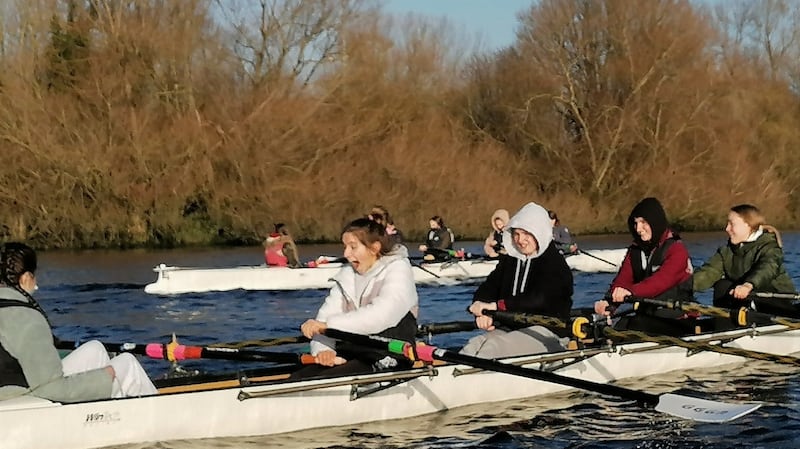
Rowing Ireland chief executive Michelle Carpenter is taking part in a "return to rowing" programme with a group of women. When she started rowing in 1987, participation wasn't expected to go beyond your 30s.
“The age profile on the Liffey on Sunday was fantastic,” she says. “It was literally 12/13 year-olds and people...with grey hair, let’s say.
“We’re all ages, all fitness levels, all shapes and sizes but it doesn’t matter; we’ve all rowed before. For me rowing is like yoga on the water, you have the oars, the flat water, the whole Zen of it.”
It may be a sport done sitting down but it offers a complete body workout that is invaluable whether you’re a teen or a pensioner. Later in life, its low-impact nature can attract athletes driven out of other sports by leg injuries, such as Achilles tendon problems.
Starting out: This isn't a sport for small children although Carpenter reckons that from age eight they can learn to be a cox to steer the boat, even if it is likely to be another couple of years before they can help to propel it.
“The only reason you need to be a bit older, you need [to be] a bit taller. It can be difficult at a young age to manage the oar.”
When she joined the organisation in 2014 she set up the Get GoingGet Rowing schools programme that involves a coach bringing a rowing machine for pupils to learn some of the basics before trying out on the water at a local club. Before Covid they were reaching 36,000 children a year in schools around the country.
There are more than 100 river, coastal and offshore rowing clubs on the island and you will find one in your area through rowingireland.ie.
Golf
The stereotyping of golf as an ideal older person's sport does it no favours in trying to attract those at the other end of the age spectrum. But Golf Ireland (golfireland.ie) has just launched a junior policy for golf clubs, outlining best practice for the recruitment and retention of boys and girls.
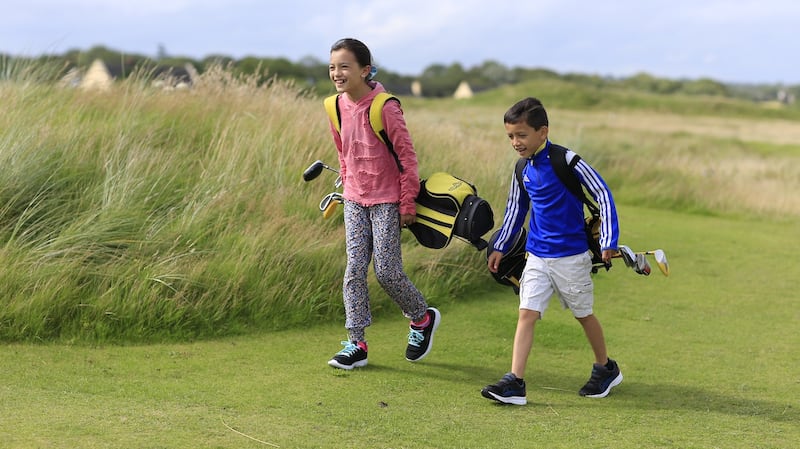
It is aiming to ensure that clubs welcome juvenile players by promoting opportunities for fun and socialising, as well as access to appropriate coaching and competitions, and giving them a voice in the running of the club.
It’s a good family sport because the handicapping system allows golfers of varying ages and abilities to play and compete together on equal footing, whether that’s over nine or 18 holes.
The longer life expectancy that golfers enjoy – quantified in a Swedish study as a potential extra five years – is as a result of the combination of walking, muscular activity and social interaction.
Starting out: The minimum age for involvement varies from club to club but typically it would be around seven or eight. Golf Ireland works with schools to run taster sessions and can link pupils who would like to learn more with local clubs. Golf is not included as one of the named sports on the Leaving Cert PE course, something which Golf Ireland is seeking to change.












